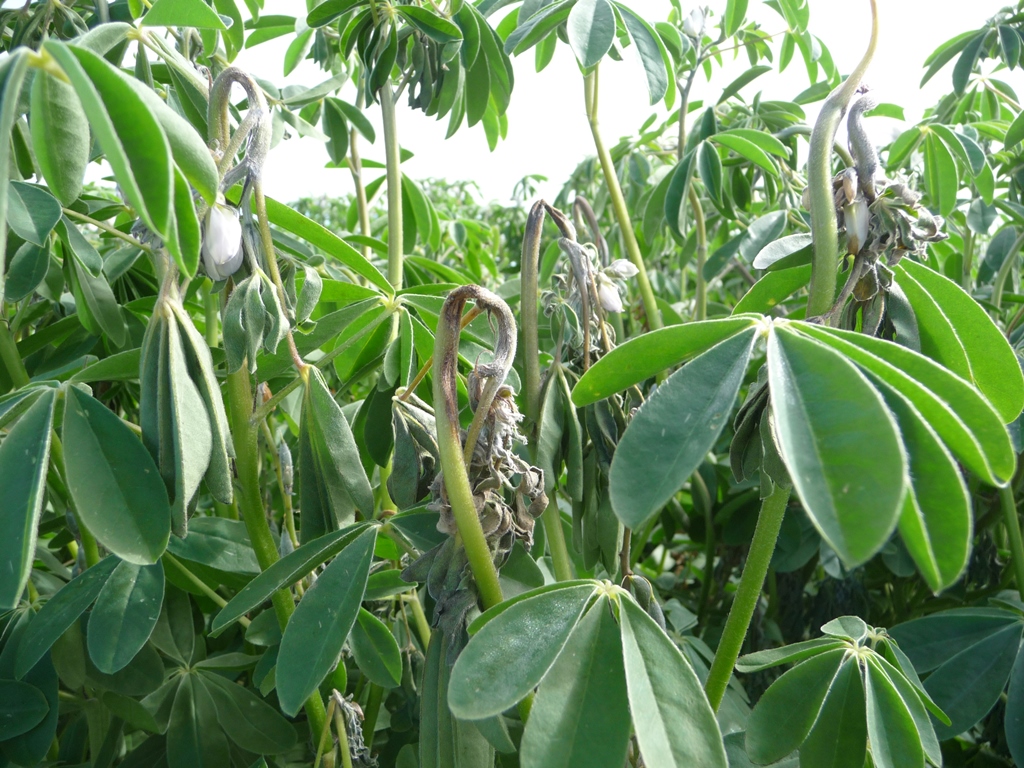Symptoms
Seedlings can develop lesions on the hypocotyl or cotyledons. Stem lesions are very distinctive and (Image 9) are oval shaped, up to two centimetre long and contain spore masses which are pink to orange. These lesions cause the stem to collapse on one side and bend to produce a ‘shepherds crook’ symptom. Lupin branches die back as the lesions mature, eventually causing the death of the whole plant. Further rainfall will allow infection progress to infect pods and seeds. Pods can develop lesions which also result in twisting and distortion of pods. Pod infection can result in nil seed set or infected seed. Lesions on pods also develop brightly coloured spore masses which vary in colour from pink to white. Symptoms are most noticeable during
flowering.
Infected lupin seeds can be discoloured, however, infected seed may not have symptoms.
Organism
Colletotrichum lupini (formerly known as Colletotrichum gloeosporioides).
Host range
Lupinus spp.
Method of spread
Infested seed and trash carry the pathogen to new areas, water splash will spread spores short distances within crops. Lesions on infected plants produce an abundance of spores that are spread through the crop by rain splash, but movement by machinery, animals, birds and seed also occur.
Conditions favouring disease
Colletotrichum lupini can survive over summer on infected trash and seed. Wet conditions in winter favour germination of infected seed and disease establishment. Frequent rainfall during flowering favours spread of the disease within crops and development of shepherds crook symptom.
Confused with?
The disease can be confused with frost injury, which can also cause collapse and premature death of the main stem. However, only anthracnose produces bright pink to orange spores masses within stem lesions.
Phytophthora root rot of lupin can also result in sudden wilting and death of plants which can sometimes produce a collapsed stem. Plants with this disease will have a badly-rotted root system.
Discolouration of seed can also be caused by another fungal disease, brown leaf spot, caused by the fungal pathogen Pleiochaeta setosa.
Where?
The disease is widespread throughout Western Australia and South Australia.
Thank you to Kurt Lindbeck (NSW DPI) for assistance with his contribution of content.

Image 8. Stem infection on albus lupins.
Source: Kurt Lindbeck, NSW Department of Primary Industries.

Image 9. Early stem infection.
Source: Kurt Lindbeck, NSW Department of Primary Industries.


